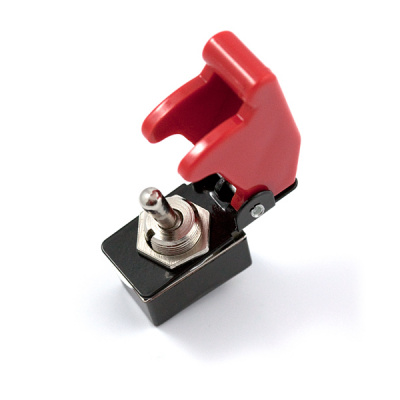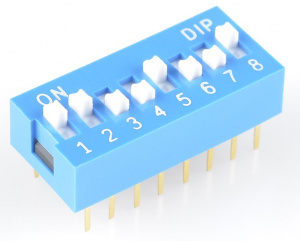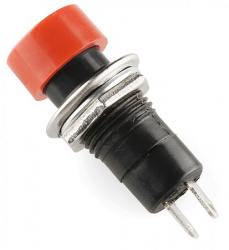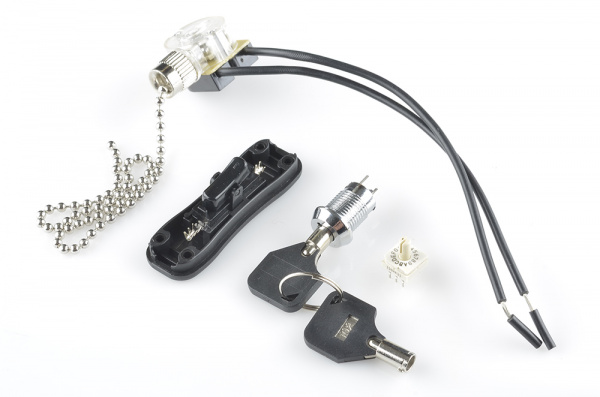Button and Switch Basics
Maintained Switches
A maintained switch retains its state until it’s actuated into a new one. Just look to the nearest wall for an example of a maintained switch -- the thing controlling your lights! Maintained switches are great for set-it-and-leave it applications like turning power on and off.
Examples of Maintained Switches
Slide Switch
Need a really basic, no-frills ON/OFF or selector switch. Slide switches might be for you! These switches have a tiny little nub which protrudes from the switch, and it slides across the body into one of two (or more) positions.
You’ll usually find slide switches in SPDT or DPDT configurations. The common terminal is usually in the middle, and the two select positions are on the outside.
Toggle Switch
When you hear toggle switch, think “fire ze missiles!”. Toggle switches have a long lever, which moves in a rocking motion. As they move to a new position, toggle switches make a really satisfying “snap”.
Toggle switches are commonly SPST (two terminals) or SPDT (three terminals), though you can find them in other flavors as well. As usual, you can find them in through-hole, surface-mount, or -- probably most commonly -- as panel-mountable.
DIP Switch
DIP switches are through-hole switches designed in the same mold as a through-hole DIP IC. They can be placed in a breadboard, in the same manner a through-hole IC might, by straddling the center area.
These switches often come in arrays of eight or more separate SPST switches, with tiny little sliding levers. They were widely used in the olden days of computing, but they’re still useful for configuring a devices via hardware.
Latching Buttons
Push-buttons aren't all momentary. Some push-buttons will latch into place, maintaining their state until pressed again latching back to where the started. These can be found, for example, in stomp switches on guitar effect pedals.
Etc.
We've barely started to cover the huge variety of maintained switches out there. There’s pull-chain switches, which add a really classy touch to your project. Key-switches, for when you don’t want just anybody turning on your killer robot. Rotary switches -- like those on a multimeter -- provide a unique input device, especially when you’ve need a high number of throws.
And, of course, what mad scientist could live without a big ol’ knife-switch?




